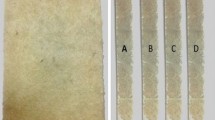Abstract
Fiber metal laminates (FMLs) are a special type of composite structure consisting of metal sheets bonded to composite laminas. The current study investigated the effect of the replacement of cross-ply (0/90°) glass fiber reinforced epoxy laminas with woven glass fiber reinforced polyester laminas in GLARE laminates on the tensile, bending and interlaminar fracture toughness of the laminate. Test results showed that the existence of woven glass fiber laminas increased the tensile strength with a decrease in corresponding strain, the flexure strength decreased significantly due to the existence of polyester instead of epoxy resin, and the mode I interlaminar fracture toughness increased. ABAQUS® software was used to simulate the tests, and ductile damage was employed to detect the failure of aluminum layers, the Hashin failure criteria to model the failure of composite layers in the laminate, and the cohesive surface interaction to capture delamination between layers.
Similar content being viewed by others
References
A. Asundi and A. Y. N. Choi, Fiber metal laminates: An advanced material for future aircraft, J. of Materials Processing Technology, 63(3) (1997) 384–394.
A.-K. Akbar, G. Lawcock, L. Ye and Y.-W. Mai, On the fracture mechanical behavior of fiber reinforced metal laminates (FRMLs), Computer Methods in Applied Mechanics and Engineering, 185(4) (2000) 173–190.
J. Young, J. Landry and V. Cavoulacos, Crack growth and residual strength characteristics of two grades of glass-reinforced aluminum ‘Glare’, Composite Structures, 27(4) (1994) 457–469.
L. B. Vogelesang and A. Vlot, Development of fiber metal laminates for advanced aerospace structures, Journal of Materials Processing Technology, 103(1) (2000) 1–5.
A. P. Sharma, S. H. Khan and V. Parameswaran, Experimental and numerical investigation on the uni-axial tensile response and failure of fiber metal laminates, Composites Part B: Engineering, 125(15) (2017) 259–274.
P. Mathivanan, M. Balakrishnan and H. Krishnan, Metal thickness, fiber volume fraction effect on the tensile properties, debonding of hybrid laminates, J. of Reinforced Plastics and Composites, 29(14) (2010) 2128–2140.
S. E. Moussavi-Torshizi, S. Dariushi, M. Sadighi and P. Safarpour, A study on tensile properties of a novel fiber/metal laminates, Material Science and Engineering: A, 527(18–19) (2010) 4920–4925.
H. Li, Y. Xu, X. Hua, C. Liu and J. Tao, Bending failure mechanism and flexural properties of GLARE laminates with different stacking sequences, Composite Structures, 187(1) (2018) 354–363.
S. M. R. Khalili, R. K. Mittal and S. G. Kalibar, A study of the mechanical properties of steel/aluminium/GRP laminates, J. of Materials Processing Technology, 186(1–3) (2007) 284–290.
C. Liu, D. Du, H. Li, Y. Hu, Y. Xu, J. Tian, G. Tao and J. Tao, Interlaminar failure behavior of GLARE laminates under short-beam three-point-bending load, Composites Part B: Engineering, 97(15) (2016) 361–367.
A. Rajabi, M. Kadkhodayan and S. Ghanei, An investigation into the flexural and drawing behaviors of GFRP-based fibermetal laminate, Mechanics of Advanced Materials and Structures, 25(10) (2018) 805–812.
X. Hua, H. Li, Y. Lu, Y. Chen, L. S. Qiu and J. Tao, Interlaminar fracture toughness of glare laminates based on asymmetric double cantilever beam (ADCB), Composites Part B: Engineering, 163 (2019) 175–184.
J. R. Reeder, K. Demarco and K. S. Whitleya, The use of doubler reinforcement in delamination toughness testing, Composites Part A Applied Science and Manufacturing, 35(11) (2004) 1337–1344.
H. T. X. Truong, D. C Lagoudas, O. O. Ochoa and K. Lafdi, Fracture toughness of fiber metal laminates: Carbon nanotube modified Ti-polymer-matrix composite interface, J. of Composite Materials, 48(22) (2013) 2697–2710.
Y. Pan, G. Wu, X. Cheng, Z. Zhang, M. Li, S. Ji and Z. Huang, Mode I and mode II interlaminar fracture toughness of CFRP/magnesium alloys hybrid laminates, Composite Interfaces, 23(5) (2016) 453–465.
P. D. Soden, M. J. Hintonb and A. S. Kaddour, Lamina properties, lay-up configurations and loading conditions for a range of fibre-reinforced composite laminates, Composites Science and Technology, 58(7) (1998) 1011–1022.
H. Singh, K. K. Namala and P. Mahanjan, A damage evolution study of E-glass/epoxy composite under low velocity impact, Composites Part B: Engineering, 76 (2015) 235–248.
Author information
Authors and Affiliations
Corresponding author
Additional information
Recommended by Editor Chongdu Cho
Bassem Dahshan received the B.S. in Aeronautical and Aerospace, and M.Sc. degree in Mechanical Design from Cairo University, Giza, Egypt, in 2013 and 2020, respectively. He is currently a stress analysis specialist at the Engineering Co. for the petroleum and process industries (ENPPI). His interests are structure analysis and fracture mechanics using ANSYS and ABAQUS.
Abdelhalim M. Elhabak is an Emeritus Professor of Material Science and Technology at the Mechanical Design and Production Department, Faculty of Engineering, Cairo University. He received his B.Sc. and M.Sc. in Mechanical Design and Production Engineering from Cairo University in 1975 and 1982, respectively. He received a diploma of composite materials from Nantes University in 1986, and his Ph.D. in Mechanical Design and Production Engineering in 1987 from Cairo University. His research interests are material science, stress analysis and material technology, mechanical behavior of material at high rate of loading.
Mahmoud A. Adly is Emeritus Associate Professor of Material science and Manufacturing at Cairo University — Egypt. He received his B.Sc. and M.Sc. in Mechanical Design and Production Engineering from Cairo University in 1977 and 1984, respectively. He received his Ph.D. is in Mechanical Design and Production Engineering, 1990 from Cairo University. His research interests are in the field of static and dynamic behavior of materials and structure, mechanics of solids.
Mostafa Shazly is a Professor of Solid Mechanics, Director, Centre of Advanced Materials, The British University in Egypt. He received his B.Sc. and M.Sc. in Mechanical Design and Production Engineering from Cairo University in 1996 and 1999, respectively. He received his Ph.D. in Mechanical Engineering in 2005 from Case Western Reserve University, OH, USA. His research interests are in the field of dynamic deformation of materials and structure, mechanics of solids, and finite element simulations.
Rights and permissions
About this article
Cite this article
Dahshan, B., El-Habbak, AH.M., Adly, M.A. et al. Experimental and numerical study on the tensile, three-point-bending, and interlaminar fracture toughness of GLARE. J Mech Sci Technol 34, 3273–3281 (2020). https://doi.org/10.1007/s12206-020-0719-x
Received:
Revised:
Accepted:
Published:
Issue Date:
DOI: https://doi.org/10.1007/s12206-020-0719-x




